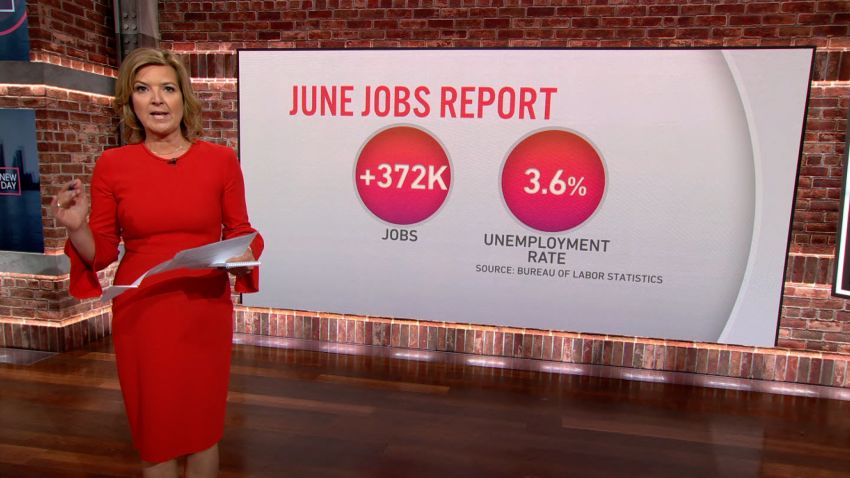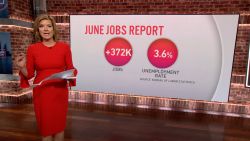Part-time work has become a lot less popular, both with job seekers and employers.
The number of workers who are working part of the time for economic reasons – because they can’t find full-time jobs, or because their employer has cut back their hours – hit a 20-year low of 3.6 million in June, according to data from the Labor Department. That’s down 25% from June 2019, ahead of the pandemic.
Those part-time workers for economic reasons, as the Labor Department classifies them, now make up just 2.2% of the overall US labor force, an all-time low in data that goes back to 1955.
A big part of the reason is the incredibly tight labor market.
Typically, there are twice as many unemployed people looking for work than there are job openings, which forces some job seekers to settle for a part-time job when they want a full-time position. Now it’s roughly the exact opposite – there are twice as many job openings as there are unemployed job seekers.
While many employers used to prefer the flexibility of having a staff made up primarily of part-time workers, they are now seeing the advantage of offering full-time work, including a reduction in the amount spent on recruiting and training due to high turnover.
“There are all kinds of productivity benefits from using more full-time workers,” said Julia Pollak, chief economist for job search firm ZipRecruiter. “It has huge retention benefits. Many companies realize [one way] their hiring problems are over is if their retention problems are fixed.”
There are now 1.8 million more full-time workers than before Covid, and 2.4 million fewer part-time workers, Pollak said. But it’s not workers’ attitudes toward part-time work that have changed, it’s their leverage in the job market: They no longer have to settle for the part-time job they might have taken in the past.
“About 90% of job seekers would prefer full-time jobs,” said Pollak. “In a tight labor market, employers have run out of other ways to appeal to candidates. Offering full-time jobs is one way to make your posting more attractive.”
Businesses that preferred using part-time workers got used to being able to easily ramp up or down the amount of labor they had depending on their amount of business, Pollak said. In some cases, they didn’t have to offer as much in the way of benefits such as health insurance or paid time off to their part-time staff.
“That can work if there’s a constant supply of new job candidates,” said Pollak. “But some companies have exhausted the supply of available workers they can hire, so that’s not a feasible model.”
Most part-time workers take a job because it works with their schedule. And in the 20 years before the pandemic, part-time workers who picked that option outnumbered those working part time for economic reasons by about a three-to-one margin. The drop in the number of people working part time by choice in June was down only 3% from June of 2019. The much bigger drop in those having to accept part-time jobs when they wanted full-time jobs means that ratio is now nearly six to one.
In addition, the number of workers holding multiple jobs was down 7% in June compared to the pre-pandemic level in June 2019. But that is up slightly from earlier this year, and from readings in some earlier years. Pollak said that people working multiple jobs typically increases, not decreases, during a strong job market.
“People typically hold multiple jobs when they have the opportunity to do so, rather than when they need to do so,” she said.
Pollak said she doesn’t know if this trend of more full-time work and less part-time work will last if the US economy falls into recession. That could turn the current labor shortage into job losses while employers suffer a slowdown in their business.
“This may be another one of those things that the minute there is some slack in the labor market, and companies see their revenue fall, there will be a conversion back to what we’ve seen before,” she said.





















